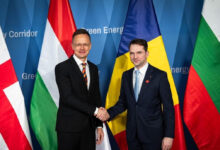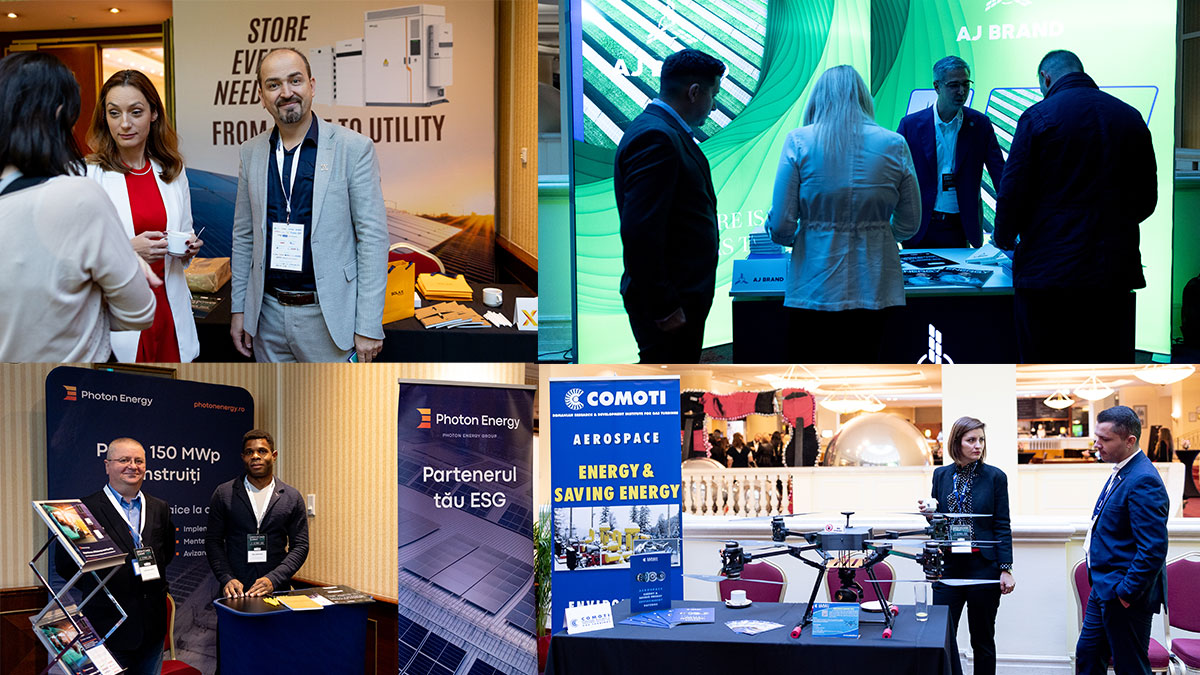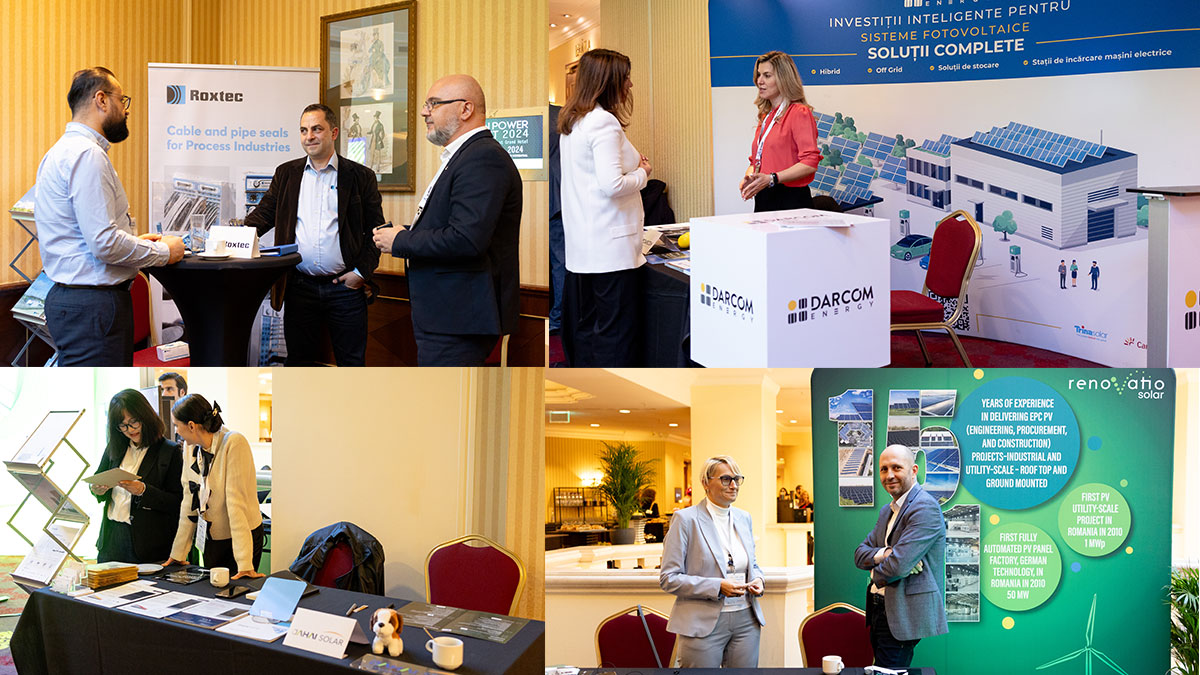Green Power Summit 2024 – Unlocking Romania’s Clean Energy Potential
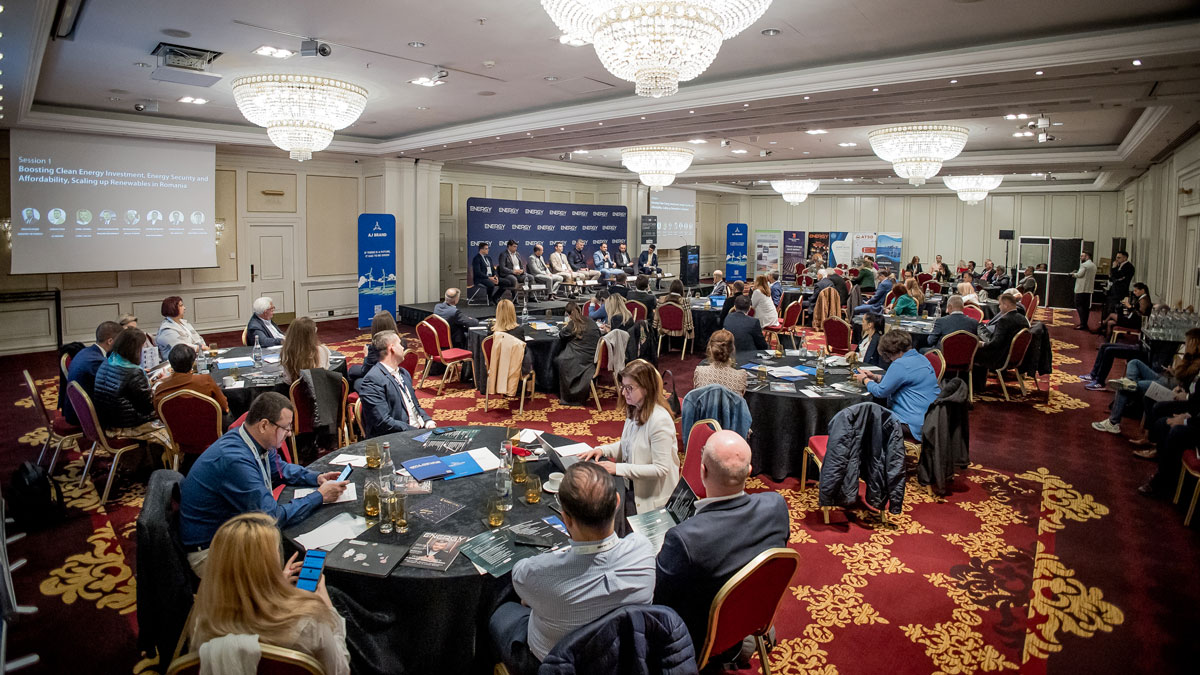
The 2nd edition of the Green Power Summit, organized by Energy Industry Review in Bucharest, focused on clean energy investment, energy security and affordability, scaling up renewables in Romania, strategic financial planning and next generation technologies, and leadership vision for a functioning competitive market.
This significant gathering of the energy industry leaders facilitated face-to-face meetings to:
- Explore next-generation technologies for the advancement of sustainable energy sources in a net-zero world
- Discuss new opportunities and challenges Romania faces in the new era of green power
- Identify priority actions for delivering on COP28 outcomes: Tripling renewable energy capacity, doubling energy efficiency progress, substantially reducing methane emissions.
In her opening remarks, Oana-Marciana Özmen – Secretary of the Committee for Industries and Services, of the Chamber of Deputies, pointed out Romania’s potential to produce hydrogen. She also encouraged H2 use in industry and transportation, the use of biomethane and the development of nuclear projects in Romania. Speaking of our country’s green future, she stressed the importance of interconnectivity and regional cooperation on the pathway to sustainability.
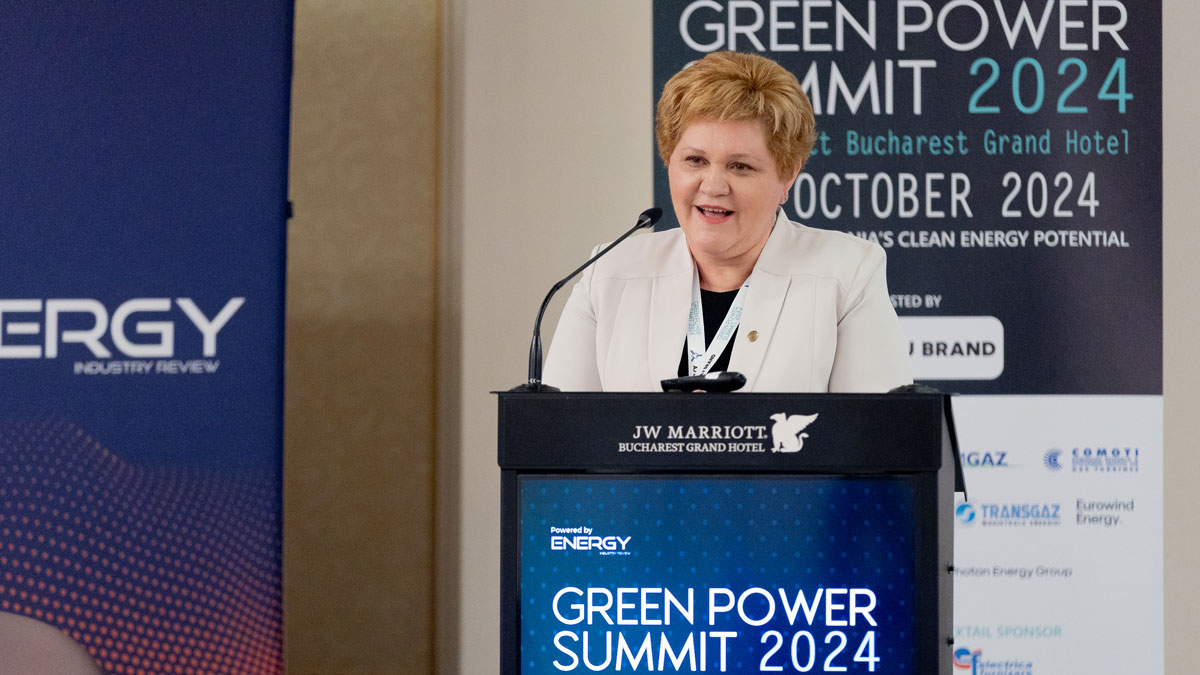
Continuing with the idea of sustainability, Romanian Energy Minister Sebastian Ioan Burduja emphasized the power of energy for Romania to become a regional leader. He reminded the audience of the Ministry of Energy’s main funding plans, programs and projects to develop industry and supply chains to support the green transition. These include Romania’s Integrated National Energy and Climate Plan 2025-2030 and not only. The plan focuses on policies and measures aimed at increasing the share of renewable energy sources, significantly reducing greenhouse gas emissions and implementing innovative solutions across all economic sectors. It is worth mentioning that on October 17 the Energy Minister signed two grant agreements aimed at developing electricity storage capacities and promoting investments in the value chain of photovoltaic cells and panels.
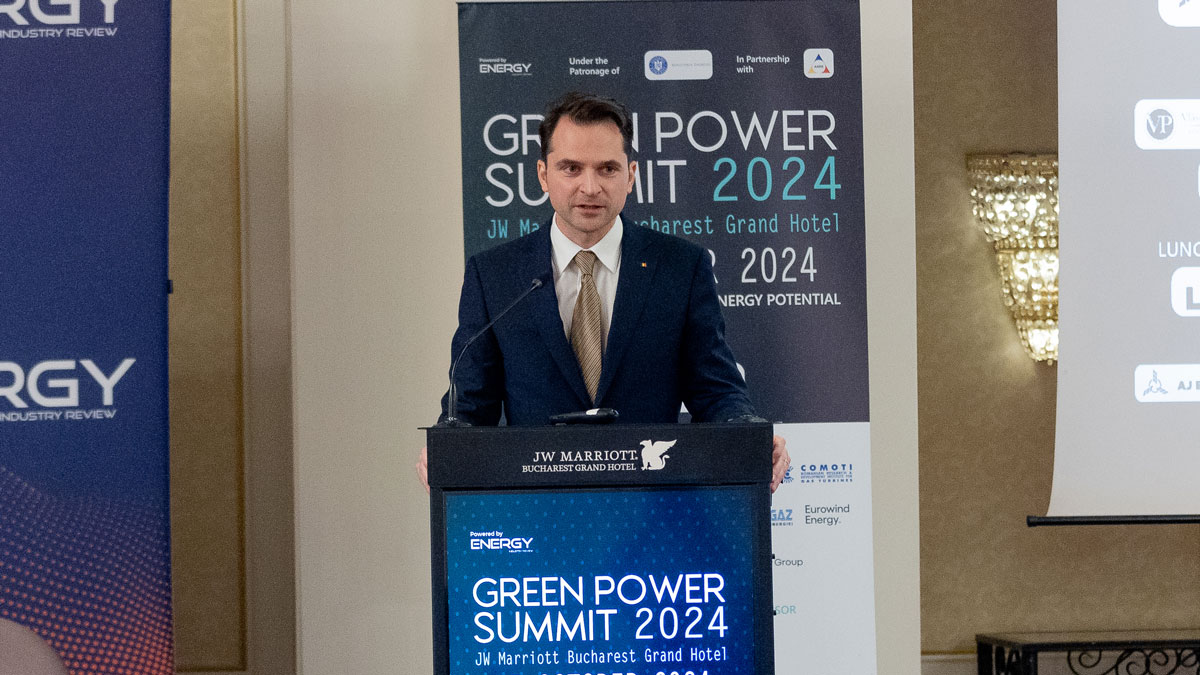
Daniel Apostol – Director General of FPPG, started his speech by explaining the presence of the Oil and Gas Employer’s Federation at the Green Power Summit. Thus, ‘Viitorul Energiei’ (the Future of Energy) is an initiative through which the association aims to contribute to Romania’s climate neutrality goals through a just transition with sufficient, affordable and clean energy. He also referred to Romania’s geological potential and recommended the revision of the Mining Law to enable large-scale use and exploitation of geothermal energy to reflect the requirements of closed-loop technology and to encourage investment. Alongside renewable energy resources such as sun, water, wind and biomass, geothermal energy has the advantage of not varying with the weather and the time of day, making it a reliable, abundant and clean source of energy. Other remarks from Daniel concerned the extension of deadlines for H2 projects, CCUS projects and the reindustrialization of Romania based on the country’s natural resources.
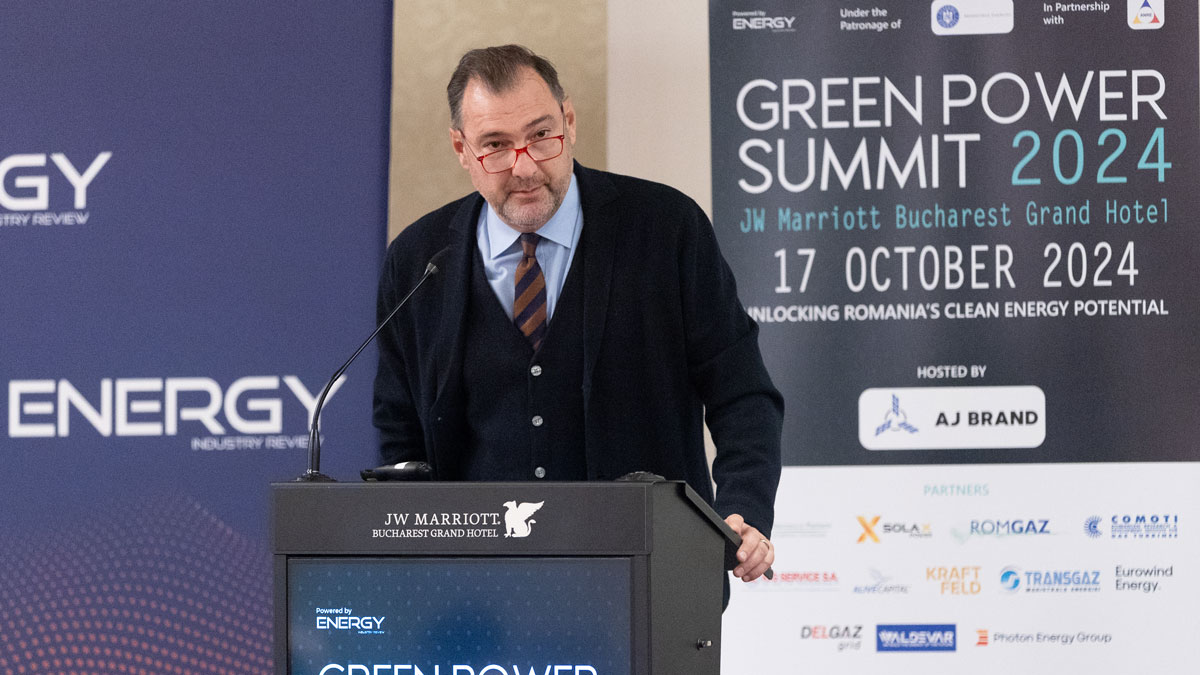
In the opinion of Andrei Manea – Executive Director, Romanian Photovoltaic Industry Association (RPIA), solar energy is the fastest, cheapest and best source of green energy. He noted the effervescence of projects on the green energy market, along with the assumption of higher 2030 targets, better communication from the Ministry of Energy and some necessary improvements related to the CfD incentive scheme for renewables, Guarantees of Origins (GOs), green labels and Romania’s accession to the Association of Issuing Bodies (AIB).
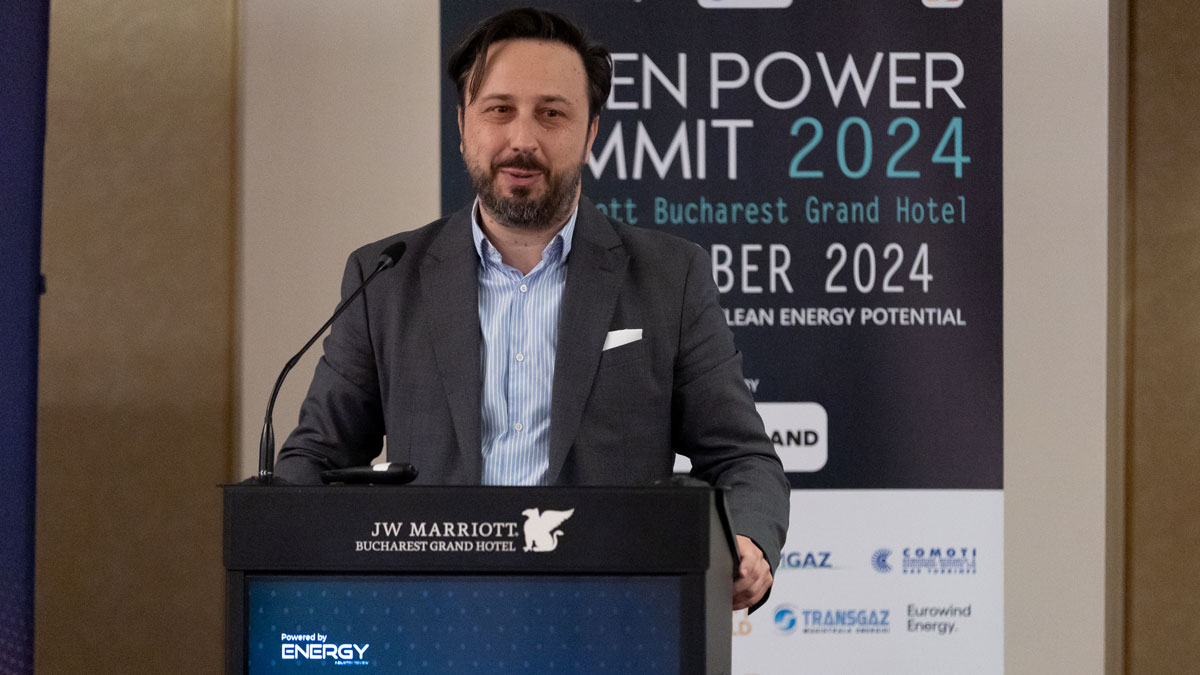
Boosting clean energy investment, energy security and affordability, scaling up renewables in Romania
Iulian Harpa – Managing Partner, HIM PUBLIC AFFAIRS, delved into key drivers to boost clean energy investment, energy security and affordability, energy storage, and scaling up renewables in Romania along high-profile fellow panellists.
Dragos Roibu – Chief of Staff, MINISTRY OF ENERGY, who shared with the audience the vision of the Ministry of Energy to foster the development of the energy sector in Romania, mentioned the key instruments, including Power Purchase Agreements (PPAs) and GOs, to promote the development of clean energy sources in Romania. These instruments are increasingly significant for companies committed to sustainability and navigating the energy transition, he underlined. Functioning European models, such as the German or Swedish model of implementing renewable energy, could be followed by Romania, Dragoș said. Non-reimbursable funds provided by the Ministry of Energy to support investments in new renewable electricity generation capacity for self-consumption and production, as well as for electricity storage in batteries were also mentioned. All this to ensure affordable prices and increase competitiveness.
AJ BRAND, a group with two companies – AJ Renewables and AJ Construction, dedicated to sustainable and renewable energy solutions, made essential progress in Romania during this year. Currently, the group has secured multiple projects in Romania totalling more than 850 MW. And the future sounds better, according to Adrian Stan, Founder and Chairman of the Board. AJ Construction will add to the market 900 MW in the next two years.
Analysing the challenges between development and construction, Adrian also highlighted the importance of energy storage, an essential component of modern energy projects. As far as he is concerned, a major factor influencing the company’s activity are the changes in the grid connection rules in Romania. For example, a critical consideration for future projects is that any ongoing grid connection application without an issued ATR (Technical Approval for Connection) on January 1, 2026, will be terminated; also, the imposition of daily penalties of 0.01% on grid operators for delays in completing reinforcement works, and so on.
Another alarm signal, this time about falling prices, in a very short time, for renewable energy constructions, was raised by Mirel Jarnea – Business Development Manager SEE, LONGi SOLAR. He noted that the competitive landscape, driven by overcapacity, has resulted in downward pressure on photovoltaic module prices. Thus, from €250,000/MW it has now reached €100,000/MW. Instead, as Mirel noted, the market has stabilized and has gone through a screening process, with only serious investors remaining involved, whose interest will be on the rise during 2027-2028. Regarding the labour force, the proportion of Romanian employees reaches 60-70%, he noted.
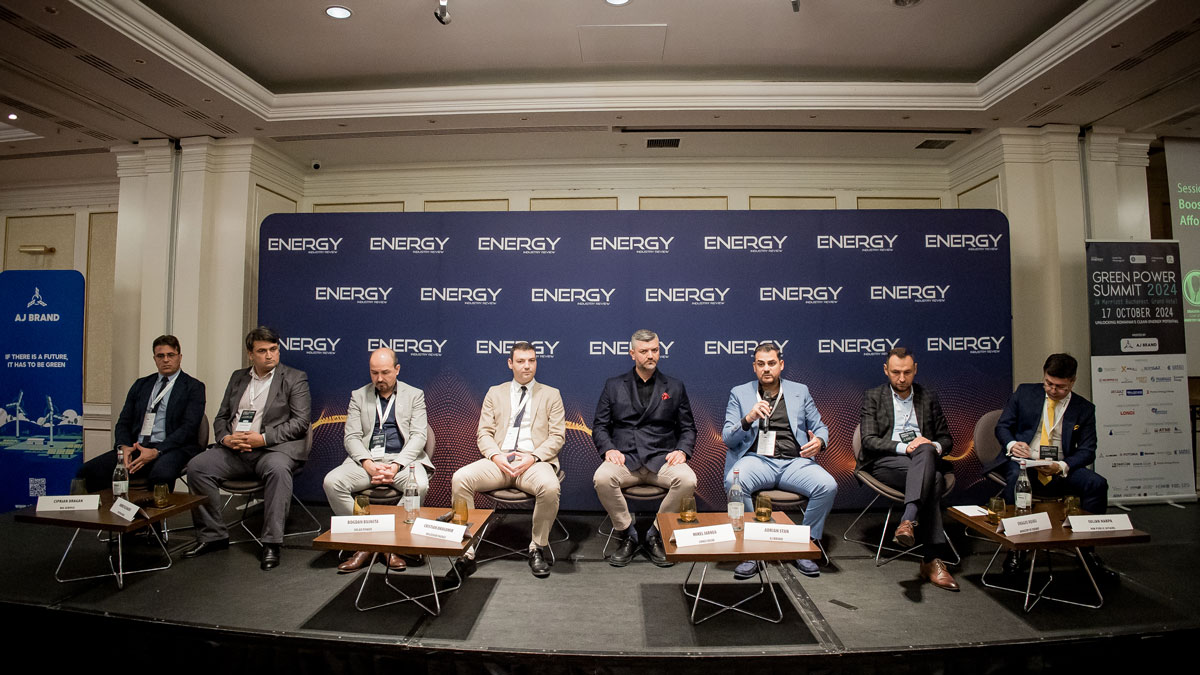
The discussion about the best practices for renewable projects powering and commissioning was continued by Cristian Dragomir – CEO, WALDEVAR ENERGY. The company provides Engineering Procurement and Construction (EPC) solutions for C&I, utility scale ground-mounted and floating photovoltaic plants. Moreover, WALDEVAR Energy intends to integrate innovative energy storage solutions into their projects to optimize investment costs. Cristian observed that the most important factors to reach (and exceed) the targets and a successful project implementation are the power plant planning and a rigorous analysis of the pre-design process.
More details regarding energy storage – ‘the new kid on the block’, were provided by Bogdan Bujnita – Marketing Manager, SOLAX POWER. Established in 2012, SolaX is an internationally renowned provider of photovoltaic energy storage systems and products, providing photovoltaic energy storage inverters, energy storage batteries, and grid-connected inverters to customers around the world. Among the major concerns of the company, which has been active in Romania for five years, are research and development, employing over 1000 people in this field, and education. In his presentation, Bogdan insisted on a revolutionary solution – Aelio. This is a highly integrated, all-in-one, C&I Hybrid energy storage cabinet with multiple application scenarios. Its advantages include intelligent charge and discharge management, safety and reliability, and simple operation and maintenance.
Andrei Bejinariu – Head of Operations O&M, PHOTON ENERGY, shared valuable insights on best practices in operating and maintaining photovoltaic power plants. Analysing how things can go wrong, he highlighted some lessons to be learned to ensure the success of a PV installation project. Andrei revealed some of the problems that can arise from the construction phase to energy production and how to manage the process.
Ciprian Dragan – Project Director, RIG SERVICE, explained how oil and gas expertise can be transferred to renewable projects. The company has been active in renewable energy since 2008, when it started to develop its first 3-turbine wind farm in Horia, Constanta County, with a total installed capacity of 7.5 MW (sold in the meantime). The next pending projects are Fantana Mare wind farm (85.8 MW installed capacity), Independenta wind farm (105.6 MW installed capacity), Saraiu (94.4 MW installed capacity) and Horia Green (48 MW solar or energy storage). In addition, Rig Service offers PV system cleaning services with its semi-automatic hyCLEANER robot.
Wrapping up the panel, speakers noted some issues/losses that need improvement in the energy renewable sector, related to predictability, expertise of managers and major projects, transportation, adaptability, resilience, business model completion, legal framework, grid balancing and connection, know-how, competitors’ preconception, joint initiatives, external competition, quality, prices, wind + solar hybridization.
Refuelling with renewables: Strategic financial planning and next-generation technologies
The panel moderated by Georgian Albu – Corporate Affairs Expert, E.ON, covered several major topics, including the advancement of renewable energy, strategic investments, innovative sustainable solutions and the latest regulatory changes, presented by skilled energy executives.
Miguel Antonio Jimenez – CEO, AJ BRAND, looked at renewable energy needs, past developments and future trends of this clean energy source. In his view, a good project must be well developed and properly executed. A good EPC, for instance, will design, integrate all technologies, use the most efficient equipment, execute the best installations to guarantee maximum availability and low maintenance costs. With the market progressing every year, with more and more players, investors, manufacturers and EPCs emerging, stability is a must. Renewable energy will continue to grow, thanks to growing industrial needs and the strategy to reduce dependence on carbon and oil, Miguel concluded.
Progress in renewable energy for sustainable growth requires strategic investment, innovative solutions and infrastructure development, said Joachim Steenstrup – Head of External Affairs & Strategy, EUROWIND ENERGY. The company considers Romania an attractive market with great potential to navigate the green transition. Thus, Eurowind Energy expects to build 1.3 GW of solar and wind power before 2030, with an 8 GW development pipeline in our country. Even if renewables are gaining traction, we have to keep in mind that the transition cannot be covered by green energy alone, Joachim warned, with cooperation more than necessary.
INCDT COMOTI’s sustainable solutions for the energy sector were presented by Andrei Petrescu – Marketing Specialist, who summarized the most important capabilities, equipment, applications, projects, new technologies and partners of the Turbine Engines Research and Development Institute, the only unit in Romania specialized in the development and integration of scientific research. Compressed air energy storage represents an actual theme for the institute and also the objective of a research project; the solutions for utilization of surplus energy being storage in natural reservoirs – salt mines or old natural gas deposits. The Institute is also continuing research in the field of hydrogen, looking at issues related to flame stability, transportation, storage. Other recent concerns include the drone department, designed entirely by COMOTI.
Utilizing lower-cost renewable energy to drive business growth is the solution seen and presented by Raluca Rusu – CEO, POWER PEAK TRADING. She discussed the important role of renewable energy in enhancing the competitiveness of Romanian businesses. By generating cost-effective energy during peak production hours, renewable sources are proving to be essential for achieving competitive pricing in the industry. Analysing EV charging prices and competitive prices for the industry in Romania, the conclusion is that flexibility solutions are the future for both renewable energy and EV.
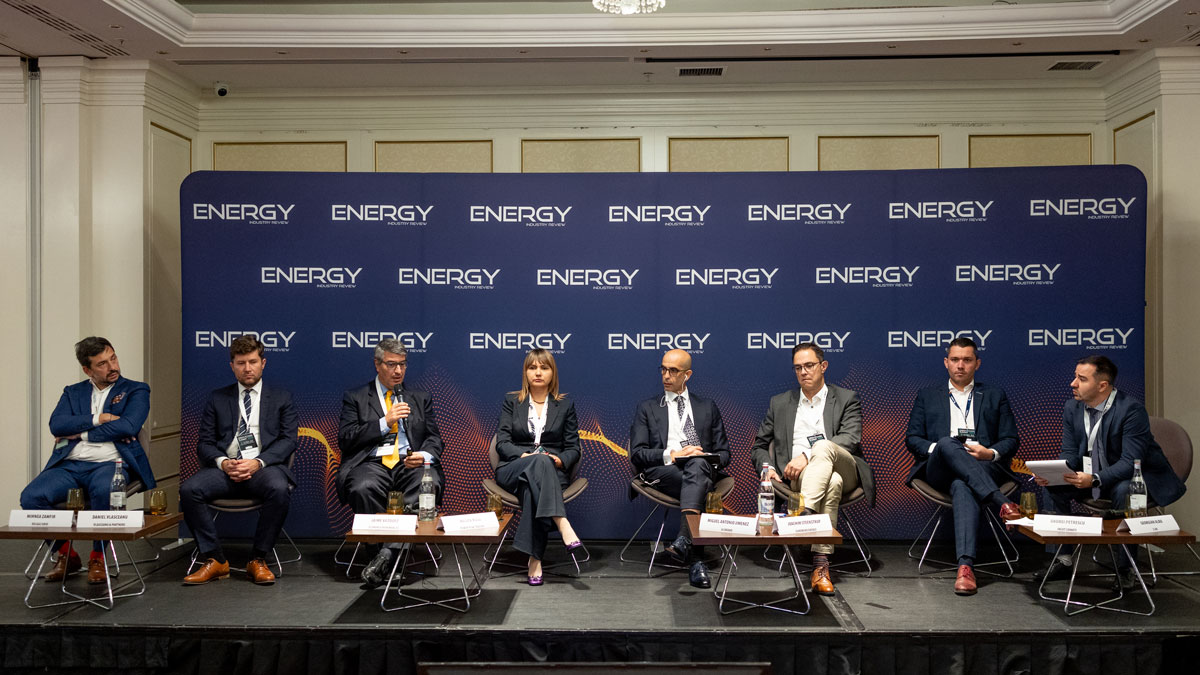
Pointing out the importance of energy grids – the backbone of the energy transition, Mihnea Zamfir – Strategy and Business Performance Director, DELGAZ GRID, advocated the need to invest in grid action plan to shift the paradigm from a centralized model to a decentralized model. In his opinion, the energy system flexibility reduces the pressure on the final consumer. As regards high electricity prices, they are due to an imbalance between supply and demand, caused by geopolitical events, legislative and country risk factors. He added that by 2030, over 32 GW of new installed capacity is planned, of which 75% will come from RES-E, with over 50% coming from volatile RES-E. In his view, hydrogen and biomethane are the main pillars for decarbonization and security of supply. Furthermore, sustainable pricing and competitiveness of the industry can be achieved by making more energy available to customers, by removing infrastructure bottlenecks. To conclude, the energy transition cannot succeed without proper investments in energy infrastructure.
According to Daniel Vlasceanu – Partner at VLASCEANU & PARTNERS, who detailed the latest regulatory changes under ANRE Order 53/2024, the introduction of financial guarantees in favour of the operator and the new rules for reinforcement works are a natural alignment of Romania to European standards and are highly relevant for the industry. While these changes seem to aim to simplify and improve grid connection procedures and combat speculative projects, it remains to be seen whether serious investors can benefit from these amendments. In short, the generation and integration of renewable energy sources into current power systems need to be linked.
Jaime Vázquez – PPA Director, ECONERGY RENEWABLES – made a detailed presentation on financing renewable projects through innovative PPA strategies. He delivered a detailed analysis of Power Purchase Agreements (PPAs) and the significance of Guarantees of Origin (GoOs) and Contracts for Difference (CfDs), underlining the growing role of these tools in Romania’s renewable energy sector and explained how they can help to finance and ensure long-term stability for clean energy projects.
Experts’ dialogue on clean energy issues: Leadership vision for a well-functioning competitive market
A leadership vision for a well-functioning competitive market has become the common point of the discussion between experts within the last panel of Green Power Summit 2024, moderated by Lavinia Iancu – CEO & Publisher, ENERGY INDUSTRY REVIEW.
The clean energy dialogue started with a brief overview of TRANSGAZ’s strategic investments for a sustainable future by Catalin Tuta – Investor Relations and Sustainability Director. The operator of Romania’s gas transmission system is concerned with expanding and upgrading existing infrastructure through the potential of integrating hydrogen from renewable and low carbon sources into the gas transmission system. The projects proposed by Romania are of major importance for achieving the objectives of decarbonization and security of gas supply to the countries of Central and Eastern Europe and the Balkans, the Republic of Moldova and Ukraine. In 2023, the company received €100.4 million in funding from the European Commission for 3 major projects: the Black Sea-Podisor gas transmission pipeline; the Ghercesti-Jitaru gas transmission pipeline; the gas transmission pipeline to supply CET Mintia. This year, thanks to its strategic investments, Transgaz reached the fourth place in the ranking of the largest transmission system operators (TSOs) in the European Union in terms of the number of kilometres of network managed.
Returning to the idea of a functioning competitive market, Silvia Vlasceanu – Executive Director, HENRO, advocates for a free energy market, without the intervention of legislation in setting prices, the developments of the last three years supporting her claim. Interventions in the market distort its functioning, as happened with the energy price capping-compensation scheme, which created problems including for suppliers to whom certain amounts are not recognized at settlement and therefore face reduced liquidity. However, given that a free market carries risks, the energy expert recommends that producers and suppliers work together.
Next, the impact of the legislation on energy prices was analysed by Marta Sturzeanu – Policy Officer, Romanian Wind Energy Association (RWEA). She recalled the European Commission’s proposal to increase the EU’s 2030 renewable energy target from 40% to 45%. Each Member State will have to contribute to this target by developing its own recovery and resilience plan (NRRP) and integrated national energy and climate plan (NECP). Of course, this also requires alignment with the binding directives of the European Commission. Given a number of infrastructure bottlenecks, investments in energy transmission and distribution networks become a priority.
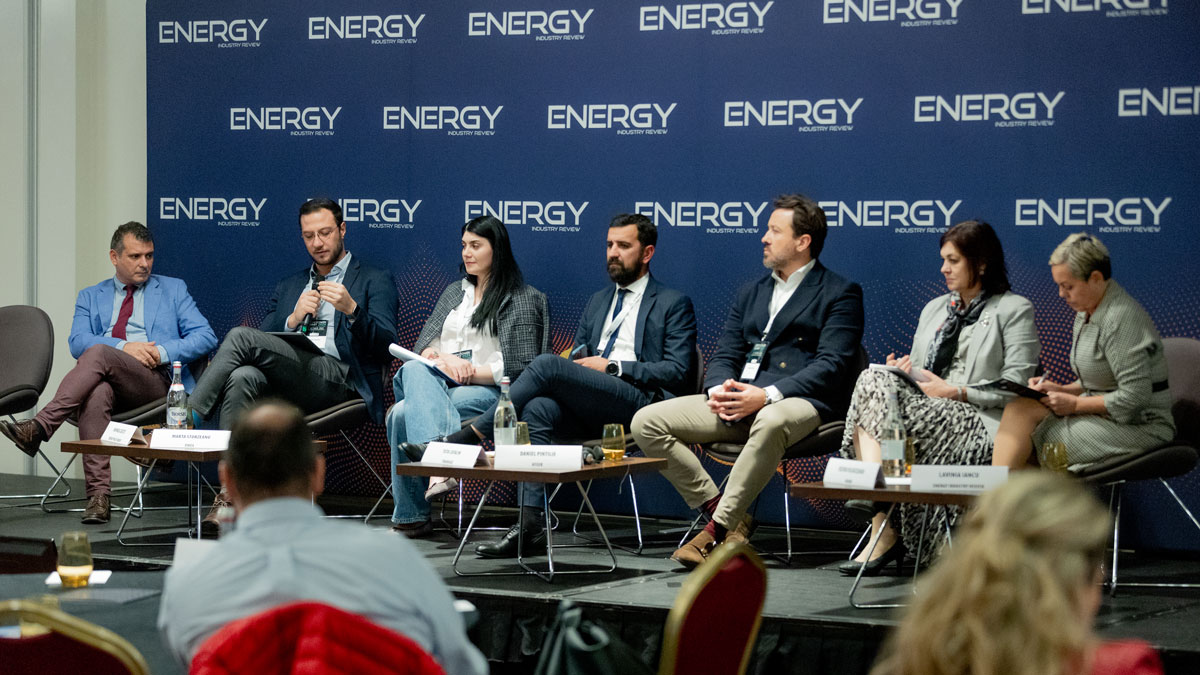
Daniel Pintilie – Renewable Energy Expert, AFEER, bets on co-located storage for peak shifting & grid-based storage for congestion management as a solution for the negative prices and grid congestion. Co-located storage allows to store solar power during low or negative price periods & sell the power when prices are high (e.g. in the evening). Congestion management is a strategy to steering either the supply or demand of energy during peak periods, when the grid’s capacity reaches its limit. Thereby, the battery will help the DSO to manage congestion during peak production. Daniel reproduced a conclusion from the World Nuclear Industry Status Report 2024 that nuclear power remains irrelevant in the international market for power generation technologies. Instead, solar + storage could be a game-changer. In 2023, global investment in energy storage will exceed global investment in nuclear energy for the first time. In short, to reach COP28 targets and triple global renewable energy capacity by 2030, the use of batteries needs to increase 6-fold by 2030. To achieve this, the use of storage batteries must continue to grow at an average of 25% per year until 2030, Daniel concluded.
The upgrading, extension and modernization of electricity grids will certainly require major investments. Mihnea Catuti – Head of Research, ENERGY POLICY GROUP (EPG) spoke about the investment needs in grids and storage technologies. He referred not only to measures to reduce CO2 emissions, but also to methods of increasing energy consumption and improving energy efficiency by using heat pumps. According to a report by EPG, the need for investment in electricity grids is estimated at around €7 billion for transmission and around €11 billion for distribution by 2030, failing which Romania risks not meeting its climate goals.
Concrete figures on Guarantees of Origins – the missing link in finalizing PPAs, were given by Mihai Versescu – Secretary General, PATRES. He analysed several factors that influence the closing prices of PPAs. These include lack of legislative predictability regarding the energy market; lack of legislation on GOs; limitations in trading GOs, both domestically and cross-border; operating costs – OPEX. In addition, Romania is not yet an AIB member. With all the barriers presented, Romania ranks 10th in Europe in 2024 in terms of the volume of energy contracted in a PPA with 0.33 GW, Mihai concluded.
Given that clean energy is growing rapidly, and the deployment of several key technologies has advanced rapidly in recent years, the Green Power Summit is helping to accelerate the green transition in Romania. Encouraging open dialogue between authorities, clean energy leaders, business owners, technology developers, energy consultants – the event provides a stage for people moving towards a sustainable future.



